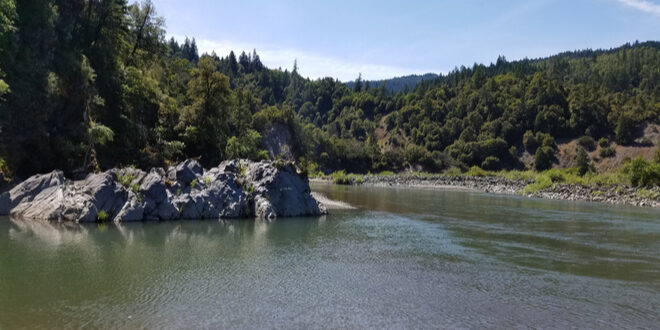On Friday, the Bureau of Reclamation announced the restoration flow schedule for the Trinity River will begin on April 15. Each year, the Trinity Management Council advances a flow schedule based on the expected amount of water available to support salmon restoration efforts on the Trinity River.
Due to lack of precipitation and snowpack in the Trinity Mountains this winter, the flow schedule for 2022 is scaled to a critically dry water year. Critically dry is one of five water year types used by the Trinity River Restoration Program to determine how much reservoir water will be released in support of the program’s goals to improve habitat for anadromous fish—fish that migrate to fresh water from salt water to spawn—like salmon and steelhead.
This year marks the third critically dry year in the last five years for the Trinity watershed. The planned release schedule attempts to maximize benefits to the physical and biological character of the Trinity River, given the constraints of the limited amount of water available.
Key components of the flow release schedule are:
- April 15-20: Increase daily average flows from 300 cubic feet per second to 6,000 cfs
- April 23: Flows decrease to 2,800 cfs
- April 24-May 13: Maintain flows between 1,800 to 2,000 cfs
- May 17: Return to 450 cfs summer baseflow, which continues until September 30
Visitors near or on the river can expect river levels to increase during the flow releases and should take appropriate safety precautions. Landowners are advised to clear personal items from the floodplain prior to the releases.
 California Water News Daily Your Source For Water News in California
California Water News Daily Your Source For Water News in California


